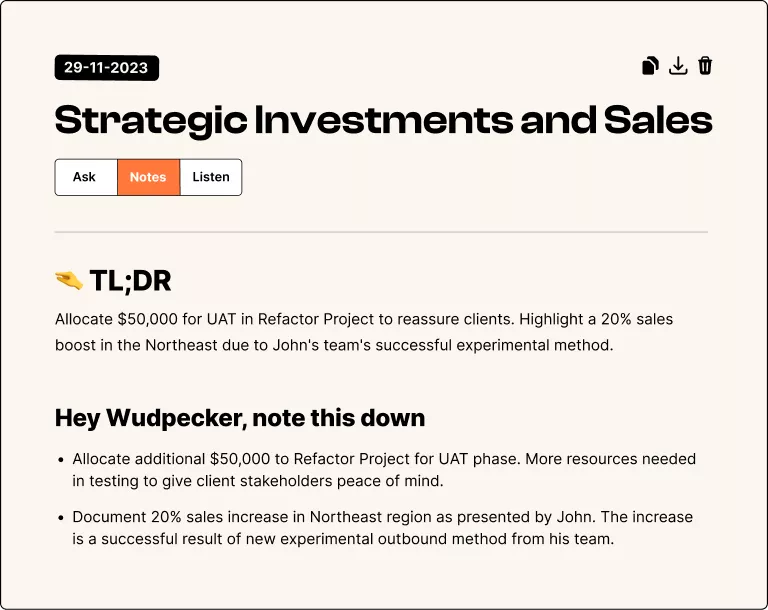Want to reduce churn and boost growth in your B2B SaaS? Health score dashboards are essential. They provide a clear view of customer health by analyzing product usage, satisfaction, and engagement. Here's why they matter and what they offer:
- Spot risks early: Detect disengaged customers before they churn.
- Drive growth: Identify upsell opportunities through usage trends.
- Simplify decisions: Use clear metrics like NPS, MRR, and feature adoption.
- Team-specific insights: Tailor dashboards for Customer Success, Sales, and Product teams.
Customer Success Webinar Series: How to Build a Health ...
Core Dashboard Elements
An effective health score dashboard brings together key metrics and clear visuals to support decision-making. These components help teams keep tabs on customer health and address issues proactively.
Key Health Score Metrics
Focus on metrics that highlight the current state and signal potential risks ahead:
Product Usage Metrics
- Daily, weekly, and monthly active users
- Adoption rates for specific features
- Session length and frequency
- Levels of user engagement
- Time spent on core features
Customer Success Indicators
- Volume of support tickets and resolution time
- Response rates to outreach efforts
- Completion rates for training programs
- Customer satisfaction scores (CSAT)
- Net Promoter Score (NPS)
Financial Health Markers
- Monthly Recurring Revenue (MRR)
- Payment history and trends
- Renewal status and likelihood
- Potential for expansion revenue
- Usage of service tiers
Data Visualization Methods
Trend Analysis
- Line charts to show usage changes over time
- Heat maps to highlight feature adoption levels
- Stacked bar charts for comparing user segments
- Gauge charts for overall health scores
- Scatter plots to identify correlations
Alert Systems
- Status indicators in red, yellow, and green
- Warnings triggered by thresholds
- Arrows showing trends (up or down)
- Risk level markers
- Priority flags for urgent issues
Team-Specific Dashboard Views
Customer Success Team View
- Trends in account health
- Engagement and activity metrics
- Patterns in support tickets
- Progress on training completion
- Key risk indicators
Sales Team View
- Opportunities for upselling
- Comparison of usage vs. allocated licenses
- Gaps in feature adoption
- Dates for contract renewals
- Indicators of growth potential
Product Team View
- Patterns in feature usage
- Mapping of user journeys
- Performance metrics for product features
- Error rates and system issues
- Trends in user feedback
These customized views prepare teams to take proactive steps, which will be explored in the next section.
sbb-itb-6285ddb
Improving Customer Success with Dashboards
Health score dashboards are a powerful tool for staying ahead in customer success efforts.
Churn Risk Detection
Keep an eye out for these warning signs:
Engagement Drop Indicators
- A sudden drop in daily active users (more than 20% below the usual level)
- Decreased use of key features
- Missed important milestones
- A spike in support tickets
- Slower responses to outreach from the customer success team
Response Protocol
- Conduct an immediate review of the account.
- Record any changes in usage patterns.
- Create a focused plan to re-engage the customer.
- Set clear metrics to track improvement.
- Monitor recovery progress weekly.
Once you've addressed potential churn risks, shift your attention to identifying opportunities for growth.
Growth Opportunity Analysis
Health score dashboards can also highlight patterns that suggest potential for growth. Keep an eye out for these positive trends:
Expansion Readiness Signals
- Consistently high usage of features (above 85%)
- Regular adoption of advanced tools or capabilities
- Positive feedback from NPS (Net Promoter Score) surveys
- Strong engagement across different user groups
- Stable or increasing usage trends over time
Dashboards make it easier to spot accounts that are ready for growth discussions. For example, Userlens's activity dots feature visually tracks how effectively customers are using features, helping you identify expansion opportunities.
Once you've identified these signals, focus on strategies to encourage broader and deeper use of your product.
Increasing Product Usage
Transform insights from dashboards into actionable strategies to increase product engagement:
Feature Adoption Framework
1. Spot Usage Gaps
Use the data to identify features with low engagement levels. This information can guide targeted campaigns to encourage adoption.
2. Set Up Engagement Alerts
Automate alerts for when usage falls below expected levels. These triggers help you act quickly to address potential engagement issues.
3. Track Results
Measure the impact of your efforts by monitoring key metrics, such as:
- Feature adoption rates
- Time-to-value (how quickly users benefit from the product)
- User satisfaction scores
- Patterns in activity frequency
Advanced Dashboard Techniques
Building on basic dashboard knowledge, these advanced techniques can improve decision-making and fine-tune how you monitor customer health.
Predictive Health Scoring
Predictive health scoring uses past data to anticipate customer behavior, helping you spot trends before they become problems.
Key Elements of Predictive Scoring
- Usage trends over 6 to 12 months
- Speed of feature adoption
- Patterns in user engagement
- Likelihood of contract renewals
- Sentiment analysis from support tickets
By analyzing these factors, you can create weighted predictions about future customer health. For instance, Userlens’s predictive scoring system identifies potential churn risks up to 90 days in advance by examining user behavior patterns. This gives customer success teams time to take action.
You can enhance these insights by dividing customers into specific segments.
Customer Health Segments
Breaking customers into groups refines health score analysis and allows for targeted strategies.
Segmentation Framework
1. Industry-Based Segments
Set different health score benchmarks for each industry. Usage patterns and success metrics often vary greatly between sectors.
2. Company Size Categories
Adjust thresholds based on organization size:
- Enterprise (1,000+ employees): Focus on department-level adoption.
- Mid-market (100-999 employees): Track how broadly features are used.
- Small Business (1-99 employees): Concentrate on core feature usage.
3. Product Maturity Levels
Group customers by how they use your product:
- Basic: Using only essential features.
- Advanced: Engaging with more complex functionalities.
- Expert: Fully utilizing integrations and advanced capabilities.
Once segmented, ensure health scores stay accurate by updating them regularly.
Health Score Updates
Keeping health scores current is crucial. Here’s how to manage updates effectively:
Recommended Update Schedule
- Monthly: Adjust metric weights and thresholds.
- Quarterly: Review the accuracy of scoring.
- Semi-annually: Consider adding new metrics.
- Annually: Reassess the entire scoring model.
Steps to Refine Scoring
- Add new product features to scoring criteria.
- Reweight metrics based on their connection to churn.
- Remove metrics that no longer provide value.
- Include new indicators of customer success.
Validation Techniques
Ensure your scoring model is reliable by:
- Comparing predictions with actual outcomes.
- Testing how changes to metrics affect scores.
- Collecting feedback from customer success teams.
- Reviewing false positive and negative rates.
Conclusion
Impact on Customer Success
Health score dashboards play a key role in improving retention and driving growth for B2B SaaS companies. When used effectively, these tools can lower churn rates and encourage early renewals, reshaping how teams interact with and support their customers.
Dashboards, when set up properly, offer several key advantages:
- Allowing teams to identify risks early and spot growth opportunities
- Helping allocate resources more effectively based on customer needs
- Streamlining workflows with data-driven processes
- Building stronger customer relationships through timely actions
Implementation Steps
1. Define Your Foundation
Identify the key indicators to track, establish clear scoring criteria, and customize thresholds for different customer segments.
2. Configure Dashboard Views
Design role-specific dashboards that highlight the most relevant metrics and indicators for each team.
3. Optimize Performance
Test the dashboard, gather feedback from your team, and fine-tune scoring weights to ensure accuracy and usability.
After fine-tuning your dashboard, tools like Userlens can take your customer success efforts to the next level.
How Userlens Can Help

Userlens provides pre-built dashboards and activity heatmaps that offer quick insights into feature usage. With its advanced analytics, you can easily detect signs of churn or uncover growth opportunities. The platform enables teams to track engagement trends, understand adoption behaviors, and drive growth strategies across customer accounts.
Related Blog Posts



.svg)



















.svg)
